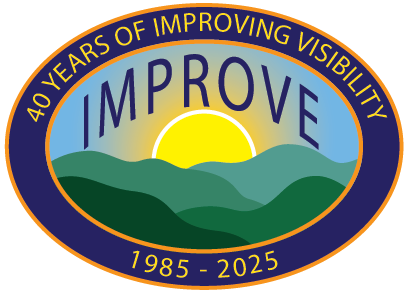The Winter Haze Intensive Tracer Experiment (WHITEX)

Background
This study was designed to evaluate the feasibility of attributing single point source emissions to visibility impairment in Grand Canyon National Park. WHITEX was conducted during a six week period in January and February 1987. During this time, an artificial tracer, deuterated methane (CD4), was released from the NGS at Page, AZ near the eastern end of the Grand Canyon. Aerosol, optical, tracer, and other properties were measured at Hopi Point (on the south rim of the Grand Canyon) and other locations. Using the tracer, 70% to 80% of the sulfate at Hopi Point under certain meteorological conditions in the winter was attributed to the NGS (Malm et al., 1989b). Some controversy arose from this attribution since the ratio of the CD4 emissions rate to power plant load was not maintained at a stable value (Markowski, 1992).
In addition, while the measurement of CD4 concentrations is quite precise, the analytical costs are high. As a result, only a fraction of the samples collected were ever analyzed. WHITEX demonstrated the potential of tracer techniques for single source attribution. The study also showed that maintaining a stable tracer/power load emission ratio and using a low cost tracer analytical technique could improve the quality of the source attribution.
Reports
Final Report: Winter Haze Intensive Tracer Experiment
Selected peer reviewed articles from the AWMA/EPA Visibility & Fine Particles Specialty Conference held in Estes Park, Colorado, October 1989:
- Meteorological Issues Associated with the WHITEX. Farber et al.
- Empirical Orthogonal Function Analysis of the Particulate Sulfate Concentrations Measured During WHITEX. Gebhart et al.
- An Investigation of the Size Distributions of Particulate Sulfate Concentrations Measured During WHITEX. Gebhart and Malm.
- Application of a Differential Mass Balance Model to Attribute Sulfate Haze in the Southwest. Latimer et al.
- Sulfur Oxides and Nitrogen Oxy-Acids Present during the WHITEX Study as Determined using Filter Pack and Diffusion Denuder Sampling Systems. Lewis et al.
- Survey of a Variety of Receptor Modeling Techniques. Malm et al.
- Application of Tracer Mass Balance Regression to WHITEX Data. Malm et al.
- The Environmental Protection Agency’s Visibility Protection Program: Ten Years of Regulatory Development. Scott and Stonefield.
- Source Attribution During WHITEX: A Modeling Study. Stocker and Pielke.

